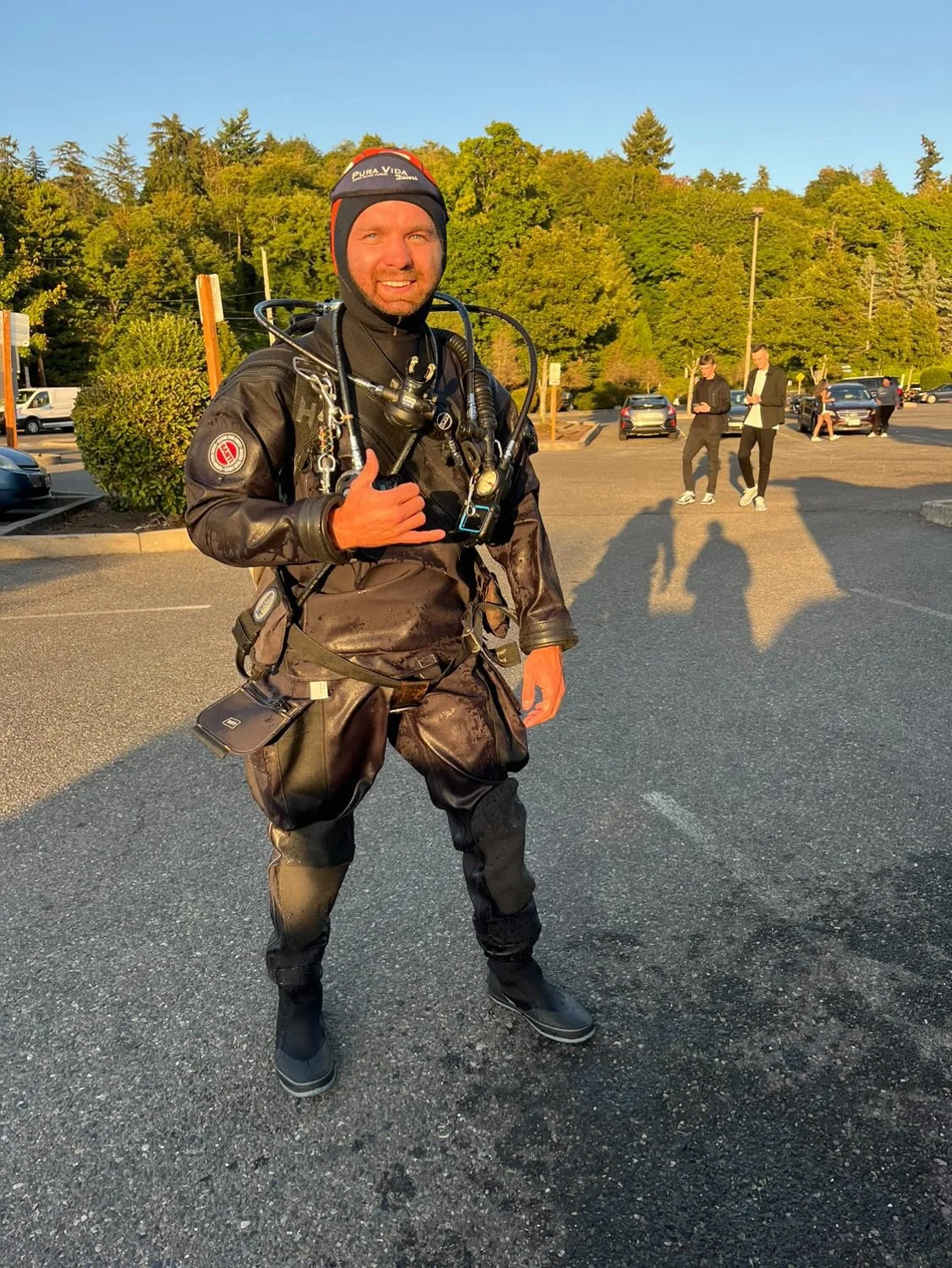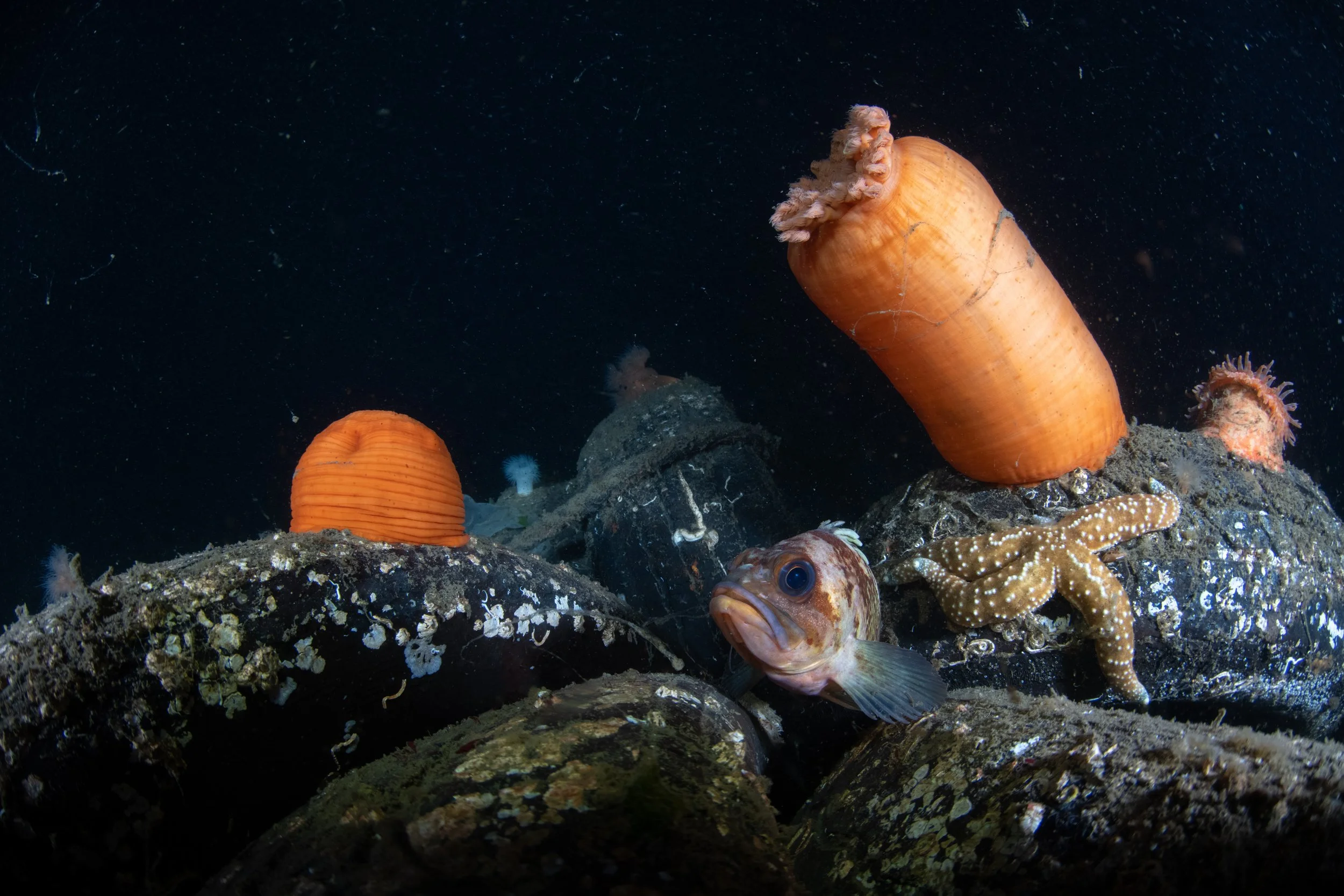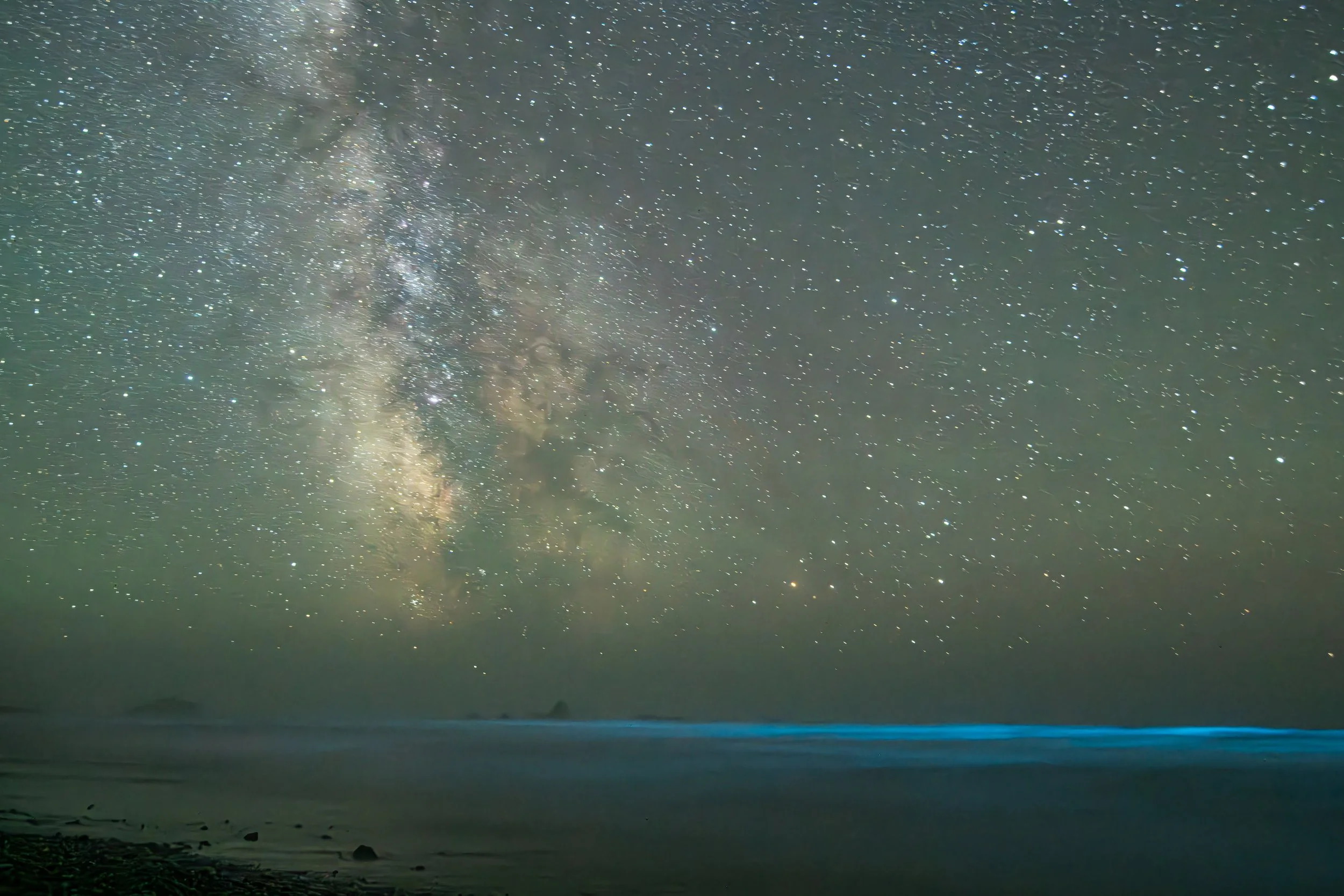Drysuit Diving in the cool Pacific Northwest
I have been diving for nearly five years now, and I must confess: plunging into 'cold water' was never really part of my plan. In fact, just last year, while visiting my family in the Pacific Northwest, I exclaimed, 'This water is freezing! There's no way I will ever dive in this part of the Pacific.' Yet, fast forward a mere year, and here I am, wriggling myself through the snug seals of a drysuit.
Now, you may wonder what led me from never wanting to dive in cold water to being moments away from splashing in. Well, I believe the answer is rather simple: the Giant Pacific Octopus. After seeing one at the Seattle Aquarium, where they alternate between captivity and the wild, I made it my mission to witness this incredible creature in its natural habitat. It was at the top of my list of must-see creatures. Among this list, you'll find:
Giant Pacific Octopus
Wolf Eels
War Bonnets
Blunt-nose Six Gill Shark
Any and all the Nudibranchs
Fish-eating Anemone
Leave your swimsuit behind
A drysuit is simply another tool that aids in exploring more underwater environments. Its function is to trap a layer of gas between your skin and the material that comes in contact with the water. This helps retain heat and provides better insulation for your body. While it might seem daunting initially, a seasoned diver can quickly adapt to this new piece of equipment. However, mastering drysuit diving didn't happen for me immediately. I still need many more drysuit dives under my weight belt before I can claim true comfort. One of my primary struggles appeared to be managing my weight, particularly during my fourth dive when I used a completely different set of gear. I'll delve deeper into that experience later on.
Each time I went diving, I found myself wearing my board shorts, almost ironically. It was as if my brain was saying, 'Well, you're getting in the water, better get your board shorts on,' which felt rather silly.
The Dives
"Including my Drysuit Certification, I completed a total of four dives while in Washington State: three at Sund Rock Marine Preserve and one at Redondo Beach. Apart from these dives, I also brought my camera along for some river hiking and snorkeling in a chilly freshwater lake. Stay tuned for those images at the end, but for now, let's plunge into the cool water.
Sund Rock Marine Preserve
Gear bench on the north end of Sund Rock Marine Preserve.
Sund Rock is a must-visit if you're planning to dive in this area. This dive site is privately owned by the Sund family and requires reservations, costing $20 per diver. This fee grants you access to a stunning dive site renowned for its Wolf Eels, Giant Pacific Octopuses (GPOs), War Bonnets, and Nudibranchs. The site offers various amenities, including parking just a short walk from the water, spacious gear benches for preparing equipment, a port-o-john, and during the right season, fresh wild blackberries growing along the parking lot. And, of course, there's a gear rinsing station at the office where you sign in before embarking on your day of diving!
Dive Site composition.
As you enter the water, you'll encounter a sloping bottom that leads to large rock faces adorned with Sea Stars, Plumose Anemones, Sea Cucumbers, and an abundance of Rock Fish. The site allows you to choose between heading north or south. From the surface, you'll notice buoys marking different boundaries of the dive site.
Plumerius Anenomes were everywhere and very impressive in size. Some even had Wolf Eels hiding beneath them.
As I geared up, I realized a small oversight—I hadn't brought any socks! Fortunately, Drew had a pair of wool socks to lend me, which kept my toes toasty throughout our dives. The water temperature measured a cool 50 degrees until we passed the thermocline, where it jumped to 65 degrees. At depth, the cold water came as a bit of a shock to areas of exposed skin, particularly my face and hands. Despite wearing a 5mm hood that kept my head rather comfortable, my hands quickly grew cold, reducing their dexterity and making it more challenging to handle my double enders and camera controls. The undergarment I used for these dives was akin to a thin, body-shaped summer sleeping bag. Ultimately, I did end up feeling a bit chilly, but it was far warmer than I would have been in a wetsuit.




Redondo Beach
Nina looking ready to dive. Be sure to take note of what the water looks like below the surface…
The gear & the site
Redondo Beach is renowned for the high possibility of Blunt Nose Six Gill Shark sightings. I've been informed that rebreather divers from the local aquarium often feed them here and use the footage for research, although I haven't personally verified this information. However, I trust my source. Adjacent to this site is a pay-to-park lot that features a rinse hose, likely intended for the boats being pulled out of the water at the nearby boat ramp. The entry point is via the stairs on the left-hand side of the image above. Beware that the last step can be larger than expected, so ensure you're prepared! The history and reputation of this site is what drew me in, aside from getting to dive with two other awesome individuals, Nina & Melissa of Eight Diving.
Is that a long hose?
All this new gear was initially a bit intimidating for me, but with Nina's help, I quickly felt at home. Eight Diving's rental equipment was exceptionally impressive, as was their shop!
Here's where things got tricky: I ended up with a different Drysuit, undergarment, regulator set, backplate, and dive computer (as I forgot mine on the charger). If simply reading that doesn't overwhelm you, I'm not sure what will. This led to the never-ending debate of 'how much weight do I need?
During my dives at Sund Rock, I carried a total weight of roughly 18 pounds, which included a steel 100 tank, steel backplate, and six pounds of lead. Even with the drysuit and undergarment combination I used then, I found myself still overweighted. After a weight check at the end of the day, I managed to descend with 12 pounds, which is considered light for drysuit diving, but I guess I'm just dense.
Upon receiving the new gear from Eight Diving, I assumed I could use a similar amount of weight, but I miscalculated and didn't fully consider the much thicker undergarment. The backplate and wing in the image accounted for twelve pounds, along with a steel 100 (six pounds) and an additional four pounds of lead. I had the foresight to anticipate that the thicker undergarment might make me more buoyant, and indeed, I was right.
Rockfish hiding among debris.
This dive begins at the end of the pier that is home to the Aquarium. You descend at the end of the pier and follow the pipes on down. It was here the thought of being under weighted crossed my mind. As I deflated my BCD I noticed I was descending extremely slowly but descending none the less. I knew then that the end of this dive may be a challenge but I held out hope and convinced myself that maybe I hadn’t gotten all of the air out of my BCD. Should I have called the dive then? What do you think?
On the descent, you'll encounter a rubble bottom adorned with shells and what seems like an infinite number of tiny Hermit Crabs. I had heard rumors about a bottle field housing small orange octopuses, but unfortunately, I hadn't had the pleasure of reaching it this time. Perhaps next time! As we neared our depth limit, we stumbled upon the infamous statue of a merry-go-round horse!
Right after I captured this image, Nina's light began flashing wildly. I swiftly swam over to her to discover she was signaling a shark! I scanned the area quickly but unfortunately didn't catch sight of anything. However, a faint beeping from my dive computer drew my attention; I was nearing my No Decompression Limit (NDL). This signaled that it was time to reverse the dive. While I missed encountering any Six Gill Sharks this time, I was thrilled that at least one of us got to see one.
Upon reaching 15 feet, the weight issues became noticeable. It wasn't overly dramatic but was certainly frustrating enough. After completing a safety stop, I had no choice but to conclude the dive around 45 minutes, just a bit short of our planned total dive time.
The cold water calls
After this experience, I certainly will be back for more diving in the PNW. The vast differences in marine life and bottom composition are extremely intriguing not to mention that I feel I must master dry suit diving! God’s Pocket has now officially been added to my bucket list.



























